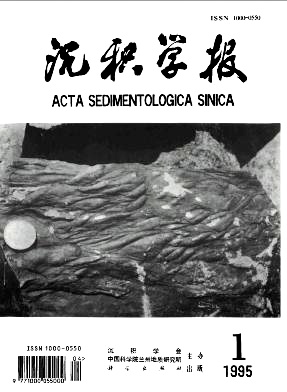Interpretation of Dipmeters in Sedimentological Research
- Received Date: 1993-07-12
- Publish Date: 1995-03-10
-
Key words:
- Dipmeters /
- Sedimentological Features /
- Microfacies of Sandbodies
Abstract: There is a lot of geological information in dipmeters.Not only can lithological boundaries be respondded, but also bedding planes of time equivalent can be detected by dipmet6rs.In other woads,when sedimentary structure of a zone chanses, the dip angle and azimuth of the zone wil change.According tO the relationship of dip vectors with depth, five grouch of dip Patterns (color Patterns)are defined on odpole plot, i.e., blue pattern, red pattern, green pattern, yellow pattern, and white pattern.These patterns stand for different sedimentary structures.Sand bodies contsin three major groupe of dip patterns: peleocurrent indscatort (current boding, downsttea accration and progradation); thalweg indicators (lateral accretion and erosional contact); and topogtsphic indicators (compection).Paieocurrent and thalweg indicators are used in current domiinant sand bodies such as fluvial channes and deltas.The compaction indicators used in defining topograhic features such as reefs and bars.The following edimentolodcal features can be studied by integrated analysis of tadpole plots, azimuth plots, and Pad resistivity curves with correlation lines:(1) Bed shape: bed thickness, lateral dimension of beds, and bedding Plane.(2) Nature of bed boundries:the transition from one lager to another can either be abrupt or gradual.(3) Bedding factores, several types of internal organization can be recognized, such as massive bedding,laminated bedding, and imbricated bedding.(4) Rhythms and cycles.(5)Paleocurrent direction and thicking direction of sand body.(6) Major sand bodies.When sedimentary environment (such as delta) is known, sandbodies (distributary channel or mouth bar sands, etc.) can be recognized.
| Citation: | Li Hongqi. Interpretation of Dipmeters in Sedimentological Research[J]. Acta Sedimentologica Sinica, 1995, 13(1): 82-87. |






 DownLoad:
DownLoad: